By Doug Ward
In a focus group before the pandemic, I heard some heart-wrenching stories from students.
One was from a young, Black woman who felt isolated and lonely. She mostly blamed herself, but the problems went far beyond her. At one point, she said:
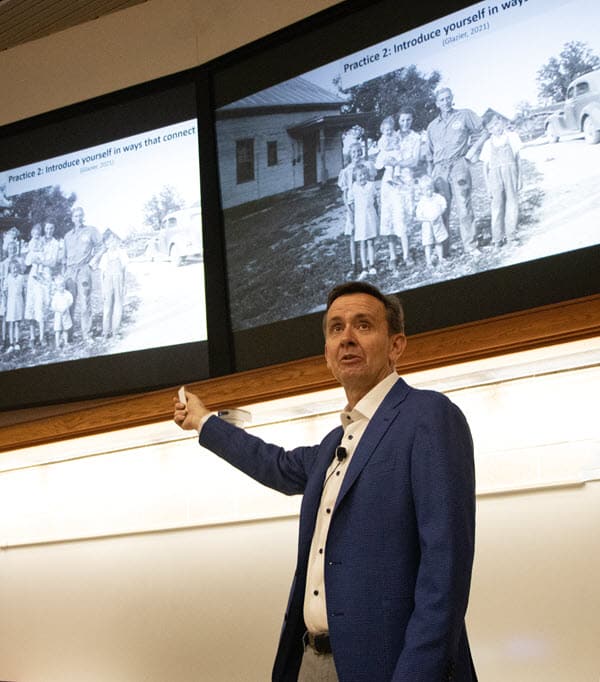
“There’s some small classes that I’m in and like, some of my teachers don’t know my name. I mean, they don’t know my name. And I just, I kind of feel uncomfortable, because it’s like, if there’s some kids gone but I’m in there, I just want them to know I’m here. I don’t know. It’s just the principle that counts me.”
I thought about that young woman as I listed to Peter Felten, the keynote speaker at last week’s Teaching Summit. Felten, a professor of history at Elon University, drew on dozens of interviews he had conducted with students, and connected those to years of research on student success. Again and again, he emphasized the importance of connecting with students and helping students connect with each other. That can be challenging, he said, especially when class sizes are growing. The examples he provided made clear how critical that is, though.
“There’s literally decades and decades of research that says the most important factor in almost any positive student outcome you can think about – learning, retention, graduation rate, well-being, actually things like do they vote after they graduate – the single biggest predictor is the quality of relationships they perceive they have with faculty and peers,” Felten said.
Moving beyond barriers
Felten emphasized that interactions between students and instructors are often brief. It would be impossible for instructors to act as long-term mentors for all their students, but students often need just need reassurance or validation: hearing a greeting from the instructor, having the instructor remember their name, getting meaningful feedback. Quality matters more than quantity, Felten said. The crucial elements are making human connections and helping students feel that they belong.
Creating that interaction isn’t always easy, Felten said. He gave an example of a first-generation student named Oliguria, whose parents had emphasized the importance of independence.
“She said she had so internalized this message from her parents that you have to do college alone, that when she got to college she thought it was cheating to ask questions in class,” Felten said. “That was her word: cheating. It’s cheating to go to the writing center, cheating to go to the tutoring center.”
Instructors need to help students move past those types of beliefs and to see the importance of asking for help, Felten said.
Another challenge is helping students push past impostor syndrome, or doubts about abilities and feelings that someone will say they don’t belong. That is especially prevalent in academia, Felten said. Others around you can seem so poised and so knowledgeable. That can make students feel that they don’t belong in a class, a discipline, or even in college because they have learned to feel that “if you’re struggling, there must be something wrong with you.”
That misconception can make it difficult for students to recover from early stumbles and to appreciate difficulty as an important part of learning.
“I don’t know about your experience,” Felten said. “What I do is hard. But we don’t tell students that, right? They think if it’s hard, there’s something wrong with them.”
Because of that, students hesitate to ask for help and don’t want their instructors to know about their struggles. As one student told Felten, “pride gets in the way of acknowledging that I don’t understand something.”
Small interactions with huge consequences
Getting past that pride can make a huge difference, Felten said. He gave the example of Joshua, a 30-year-old community college student who nearly dropped out because he found calculus especially difficult.
“I suddenly began to have these feelings like, I didn’t belong in this class, that my education, what I was trying to achieve wasn’t possible,” Joshua told Felten. “And my goals were just obscenely further away than I thought they were.”
He spoke to his professor, who told him to go home and read about impostor syndrome. That helped Joshua feel more confident. He sought out a tutor and eventually got an A in the class.
The professor, Felten said, was an adjunct who taught only one semester. Joshua met with him only once, but that meeting had far-reaching effects. Joshua completed his associate’s degree and later graduated from Purdue.
Felten called Joshua’s professor “a mentor of the moment.” That means “paying attention to the person right in front of you and being able to give them the right kind of challenge, the right kind of support, the right kind of guidance that they need right then.”
Felten also talked about another student, José, who wanted to become a nurse. José loved life sciences but bristled at a requirement to take a course outside his major. He signed up for a geology class simply because it fit into his schedule, and he vowed to do as little as possible. Ultimately, Felten said, the class ended up being “one of the most powerful classes he had taken.”
José told Felten: “My professor made something as boring as rocks interesting. The passion she had, her subject, was something that she loved.”
José never got to know the professor personally, but the way she conducted the class – interactively and passionately – was transformative, Felten said.
“The most important thing is that this class became a community,” José told Felten. “She made us interact with each other and with the subject. It just came together because of her passion.”
The importance of good feedback
Felten also talked about Nellie, a student who started college just as the pandemic hit. In a writing course, she liked the instructor’s feedback on assignments so much that she later took another class from the same professor, even though she never talked directly to her.
“She would have this little paragraph in the comments saying, you did this super well in your paper. And that little bit of encouragement, even though I’m not face to face with this teacher at all, made a world of difference to me,” Nellie told Felten. “We’ve never met in person or even had a conversation, but she has made a huge positive difference in my education.”
Instructors can easily overlook the impact of something like feedback on written assignments, but Felten said they can be validating. He cited a study from a large Australian university that found that the biggest predictor of undergraduate well-being was the quality of teaching. The authors of the study said students weren’t expecting their instructors to be counselors or therapists or even long-term mentors.
“They’re asking us to do our job well, which is to teach well, to assess clearly and to teach as if learning is an interactive human thing, to connect with each other and with the material,” Felten said.
The importance of community
I’ll go back to the young woman I interviewed a few years ago, and how isolated she felt in her classes and how alone she felt outside classes.
“I think it’s just really interesting,” she said. “I see a lot of different faces every day, but I still feel so isolated. And I know sometimes that’s like my problem. But I do feel like I should know way more people. And I just, I want to know more people.”
Her story was heart-wrenching. She and another student – a white transfer student – talked about getting “vibes” from classmates that pushed them deeper into isolation and made life at the university challenging. Neither had gained a sense of belonging at the university, even though both desperately sought a sense of connection.
In his talk at the Teaching Summit, Felten said the antidote to that was to create community in our classes.
“The most important place for relationships in college is the classroom,” Felten said. “If they don’t happen there, we can’t guarantee they happen for all students.”
He also added later: “If we know that’s true, why don’t we organize our courses, why don’t we organize our curriculum, why don’t we organize our programs, our universities as if that was a central factor in all of the good things that can happen here?”
Why indeed.
Doug Ward is associate director of the Center for Teaching Excellence and an associate professor of journalism and mass communications at the University of Kansas.

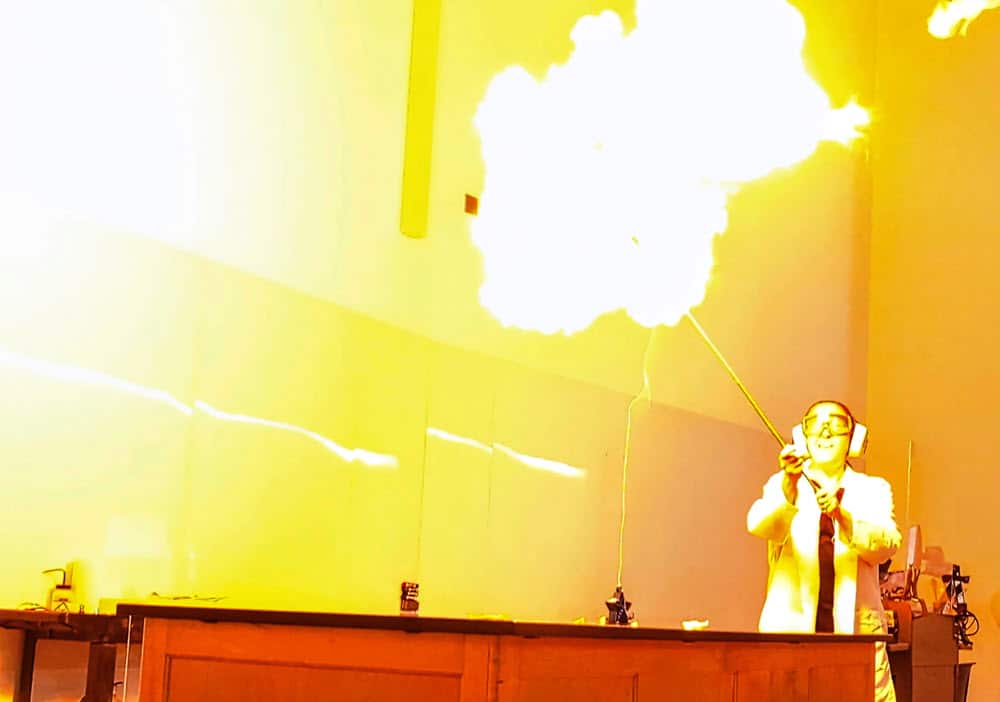

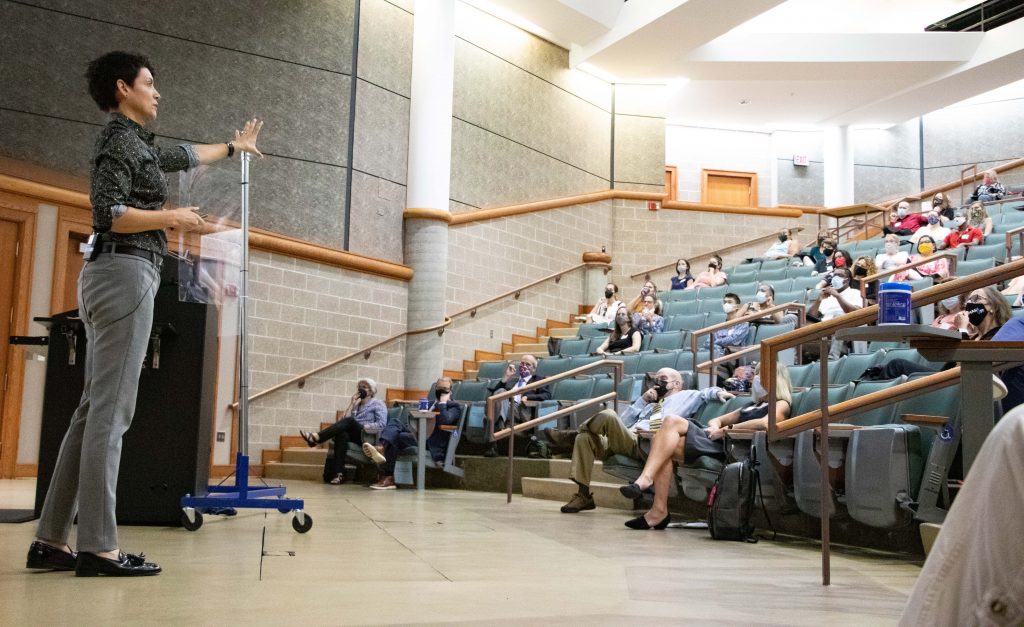
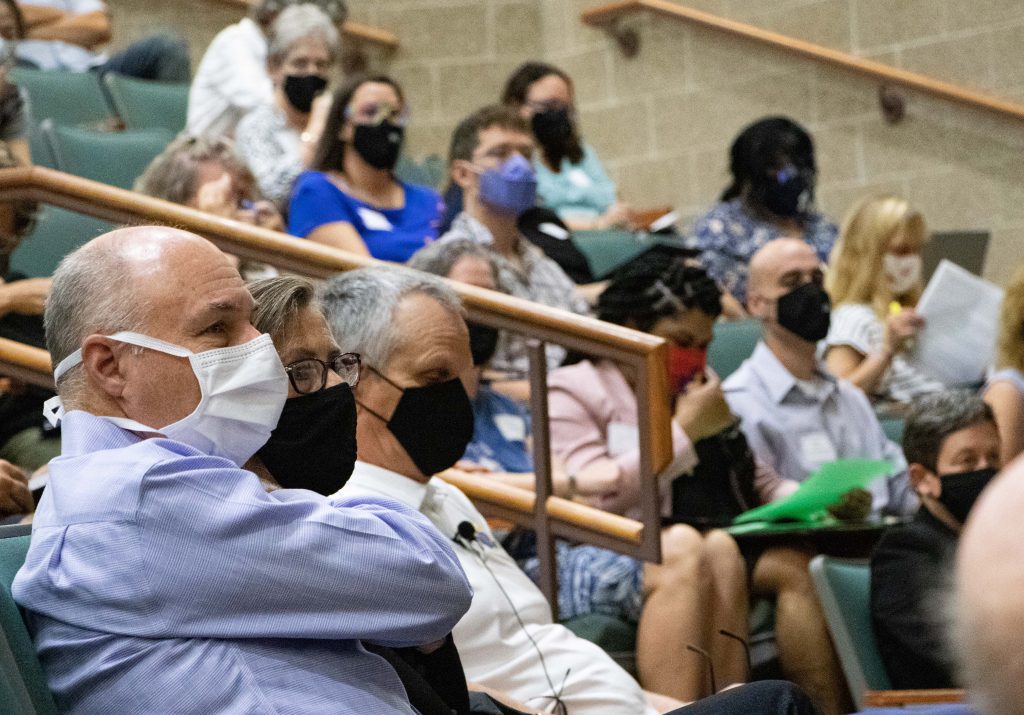

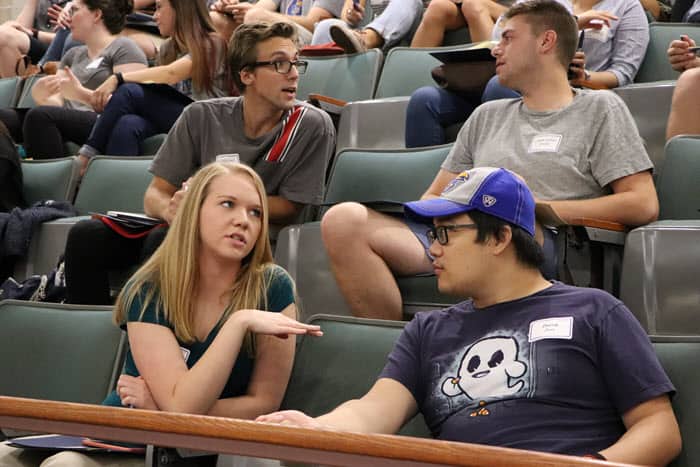


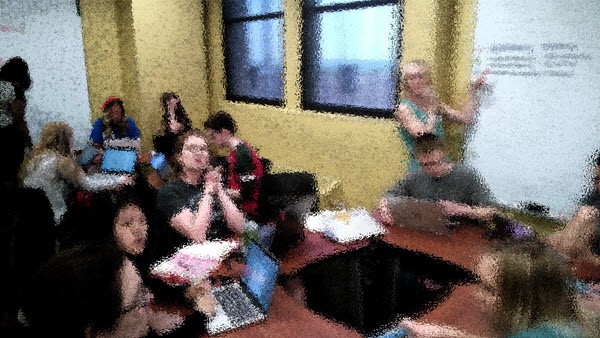


Recent Comments